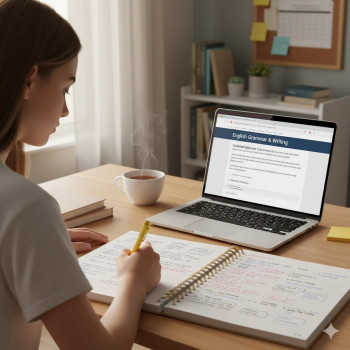Understanding the SAT Landscape for the University of Missouri
If you or your child is thinking about applying to the University of Missouri—whether Columbia (Mizzou), Kansas City, St. Louis, or one of the other campuses—it’s completely normal to have questions about SAT expectations. Between test-format changes, shifting policies after the pandemic, and the Digital SAT rollout, the admissions picture can feel confusing. This guide unpacks what you need to know in plain language: where SAT scores matter, where test-optional policies come into play, realistic target scores, and concrete strategies to improve performance. Think of this as the calm, practical handbook you can return to between practice tests and application essays.

Which University of Missouri campuses consider SAT scores?
The University of Missouri system includes multiple campuses (Columbia, Kansas City, St. Louis, Missouri S&T, and others). Admissions approaches vary by campus and sometimes by program. Many campuses now treat SAT/ACT scores as optional or considered if submitted, but they still use submitted scores for scholarships, course placement, and sometimes program-specific decisions.
That means: you can often apply without SAT results, but good scores can boost admission chances, unlock merit scholarships, and strengthen applications when GPA or course rigor leaves questions. As you plan, think strategically: if your transcript and activities already make a clear academic case, you might lean into a test-optional route. If you want scholarships, honors programs, or to show readiness for competitive majors (engineering, business, computer science), a strong SAT can make a meaningful difference.
What a ‘good’ SAT score looks like for different Missouri campuses
Admissions offices and college profiles often publish ranges reflecting where most admitted students scored. These ranges are helpful for setting target scores, though remember many students fall outside the bands.
| Campus | Typical SAT Range (most admitted students) | Where a strong score helps most |
|---|---|---|
| University of Missouri – Columbia (Mizzou) | Range varies; many campuses report ACT ranges more consistently; treat SAT as considered if submitted | Scholarships, competitive majors, honors programs |
| University of Missouri – Kansas City (UMKC) | Often reports higher middle ranges when available; aim for upper-third of reporting range | Merit awards, selective programs |
| University of Missouri – St. Louis (UMSL) | Middle-range SAT scores; submission can strengthen application | Admissions competitiveness, scholarships |
| Missouri University of Science & Technology (Missouri S&T) | Higher SAT/ACT ranges compared to some campuses—strong STEM focus | Engineering & technical programs, merit scholarships |
Use the table above as a starting map rather than a rulebook. Some campuses are more test-flexible in a given admissions cycle; others use scores selectively for scholarships or placement.
Why some campuses show “SAT information not available”
After the pandemic, many colleges adopted temporary test-optional policies, and reporting practices shifted. When a campus marks SAT info as “not available” it can mean: the school is test-optional and fewer applicants submitted scores, or reporting focuses on ACT ranges, or the institution prefers other indicators. That doesn’t mean scores are irrelevant—submitted scores still speak loudly for students seeking scholarships, honors admission, or competitive majors.
Test-Optional vs Test-Considered: Making the right choice
Test-optional means you can apply without SAT scores; test-considered means admissions will evaluate scores if you submit them. Which should you choose?
- If your SAT is significantly above your GPA-predicted performance, submit it—scores can counterbalance weaker grades and highlight academic potential.
- If your SAT score is below your GPA’s evidence of mastery, you might leave it out—especially if you have strong coursework and recommendations.
- If you’re applying for scholarships, honors programs, or competitive majors, submitting a good SAT usually helps.
Remember: admissions is holistic. Essays, letters of recommendation, extracurriculars, and course rigor all matter. Use the SAT as a strategic tool—submit it when it strengthens the overall narrative of your application.

Digital SAT: What’s different and how that affects preparation
The Digital SAT is shorter in total time and delivered via a tablet or approved laptop, with question types and timing designed for digital delivery. For most students, the content still measures evidence-based reading, writing, and math skills; the difference lies in interface, adaptive sectioning (on certain administrations), and navigation.
Practical implications:
- Familiarize yourself with the digital interface—drag-and-drop, highlighting tools, and on-screen calculators work differently than pencil-and-paper.
- Work on endurance for back-to-back digital sections—shorter overall time but more intense focus blocks.
- Practice on official digital practice platforms or high-quality simulators to build comfort with the device and timing.
Preparing: A realistic timeline and study plan
Preparation depends on your starting point and target. Below is a practical timeline with milestones for students with a typical school load.
| Time Before Test | Focus | Concrete Action Items |
|---|---|---|
| 6+ months | Baseline + Strategy | Take a full-length diagnostic Digital SAT; set target score; build weekly schedule (6–8 hours/week). |
| 3–6 months | Skill building | Work through content weaknesses (algebra, data analysis, reading passages); rotate practice sections weekly; review mistakes deeply. |
| 1–3 months | Practice tests & pacing | Take a full practice test every 1–2 weeks; simulate test-day conditions on the digital platform; refine timing strategies. |
| 2–3 weeks | Fine-tune & rest | Target weak question types, reduce study intensity slightly, ensure sleep and nutrition plans are solid for test day. |
Study methods that actually work
Quality beats quantity. Deep review of errors, targeted drills, and realistic practice tests move the needle more than endless untargeted practice.
- Active review: For every missed question, write down why you missed it and how you’ll avoid that error next time.
- Mix content and strategy: Combine concept practice (e.g., quadratic equations) with timing drills.
- Simulate the Digital SAT: Use official or high-fidelity digital practice platforms to practice navigation and device comfort.
- Use targeted mini-sessions: Short, focused sessions on weak topics (30–45 minutes) beat marathon sessions when fatigue sets in.
How much can tutoring boost results? Where Sparkl fits
One-on-one tutoring can accelerate progress dramatically—especially when it’s personalized. A tutor who diagnoses your gaps, creates a tailored study plan, and models test-taking strategies saves you weeks or months of unfocused study. Sparkl’s personalized tutoring approach—1-on-1 guidance, tailored study plans, expert tutors, and AI-driven insights—can be particularly helpful when you need targeted score gains quickly. They can help you:
- Identify the exact question types that cost you points
- Practice digital-specific navigation and pacing
- Get consistent accountability and evolving practice plans
Importantly, choose tutoring that uses real practice tests, provides measurable milestones, and adapts as you improve. If scholarship deadlines or competitive program cutoffs are looming, personalized tutoring can be a strategic investment.
Interpreting scores for admission and scholarships
Colleges generally report middle 50% score ranges to show where most admitted students fall. If your score is within or above the middle 50% for your intended campus, you’re in a strong position. If you’re below, a higher score can improve your odds. Also note:
- Merit scholarships often use specific score cutoffs—higher scores can translate to substantial financial aid.
- Program-level thresholds (e.g., engineering) sometimes expect higher quantitative performance.
- Some campuses use scores for course placement, which can affect your first semester schedule and opportunities for advanced coursework.
Practical score targets
Rather than obsessing over a single number, set a target band: a realistic reach score, target score, and safety score. Your target should place you comfortably within the middle 50% of admitted students at your preferred campus and program. If you’re aiming for scholarships or honors programs, set a higher target—often a percentile or two above the campus median.
Test day logistics and digital test tips
On test day, small things matter: device familiarity, comfortable clothing, snacks, and knowing the check-in process. For the Digital SAT specifically:
- Charge your device and know the permitted equipment if testing with your own device; follow the college board’s device rules if testing at a school center.
- Practice with the on-screen calculator and annotation tools so they’re second nature.
- Use the digital flagging and review features wisely—mark tough questions to return to if time allows.
- Manage pacing by sections: know how many questions per block and allocate time per question accordingly, leaving a buffer for review.
Beyond the SAT: a holistic application strategy for Missouri
Even at test-considered campuses, the SAT is one piece of your application. Here’s how to build a compelling, balanced application:
- Course rigor: Admissions committees love to see challenging coursework; an upward trend in grades is especially persuasive.
- Personal statement: Use your essay to show curiosity, resilience, or growth—qualities that grades and scores can’t capture.
- Letters and activities: Choose recommenders who can speak to your work ethic or intellectual promise. Quality beats quantity in extracurriculars.
- Program fit: Tailor supplemental materials or essays to the program when asked; show clear reasons you’ll thrive on that campus.
Examples: When to emphasize scores vs. other strengths
Imagine two applicants to the University of Missouri – Columbia:
- Student A has a 3.9 GPA, strong IB/AP coursework, regular research or internship experience, but an SAT slightly below the campus middle 50%. Submitting the SAT may be unnecessary; the transcript and experiences already make a strong case.
- Student B has a 3.5 GPA due to a rocky sophomore year but a strong upward trend, plenty of honors classes in junior/senior years, and an SAT well above the campus median. Submitting the SAT can highlight academic readiness and help offset earlier dips.
In short: submit scores when they help tell a stronger story about your readiness or unlock tangible benefits (scholarships, course placement).
Common questions families ask
Q: Do I need the SAT to get into University of Missouri?
A: Not always. Many campuses are test-optional or test-considered. Check the specific campus and program policy for the year you’re applying. Even when optional, a strong SAT can help with scholarships and selected programs.
Q: How many points can tutoring add?
A: Everyone’s different—some students gain 30–150 points with focused work. The key factors are starting score, time invested, quality of instruction, and practice test fidelity. Personalized tutoring that identifies specific weak areas and provides actionable practice—like Sparkl’s tailored approach—often accelerates gains.
Q: Should I take the SAT or ACT?
A: Choose the test that best matches your strengths. Some students prefer the SAT’s evidence-based reading and math formats; others prefer the ACT’s pacing and science/reading mix. Try practice tests for both formats to decide. Many Missouri campuses accept either.
Final checklist: What to do next
- Confirm the test policy for the specific University of Missouri campus and program you plan to apply to this cycle.
- Take a full-length Digital SAT diagnostic to set a realistic target score.
- Create a study calendar with focused practice, and schedule practice tests every 1–2 weeks closer to your test date.
- Consider targeted 1-on-1 tutoring if you need focused score improvement or help with digital-specific strategies—Sparkl’s personalized tutoring (1-on-1 guidance, tailored study plans, expert tutors, AI-driven insights) is a natural fit for students who want a structured, adaptive plan.
- Gather application materials early—essays, recommendations, and a strong list of courses—and use SAT submission strategically to strengthen your overall profile.
Closing thoughts: You’re more than a number
It’s easy to fixate on a single SAT number. But colleges—especially University of Missouri campuses—look for students who bring curiosity, resilience, and a clear sense of purpose. Use the SAT to complement your story, not define it. Prepare smartly, use real practice on the digital platform, and seek help when you need targeted improvement. Whether your path includes test submission or a test-optional application, a thoughtful plan will get you where you want to go.
If you’d like a next step: take a timed digital diagnostic, identify one or two weak areas, and make a two-week micro-plan to tackle them. Small, consistent wins add up fast. And if you want an experienced partner to accelerate that progress, a personalized tutoring program that blends expert tutors with adaptive insights—such as Sparkl’s one-on-one approach—can be a strategic and confidence-boosting choice.
Good luck—and remember: college admissions is a marathon with checkpoints. Prepare intentionally, rest well, and let your strengths shine.













No Comments
Leave a comment Cancel